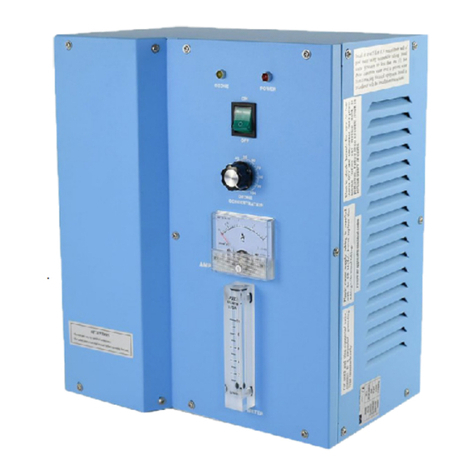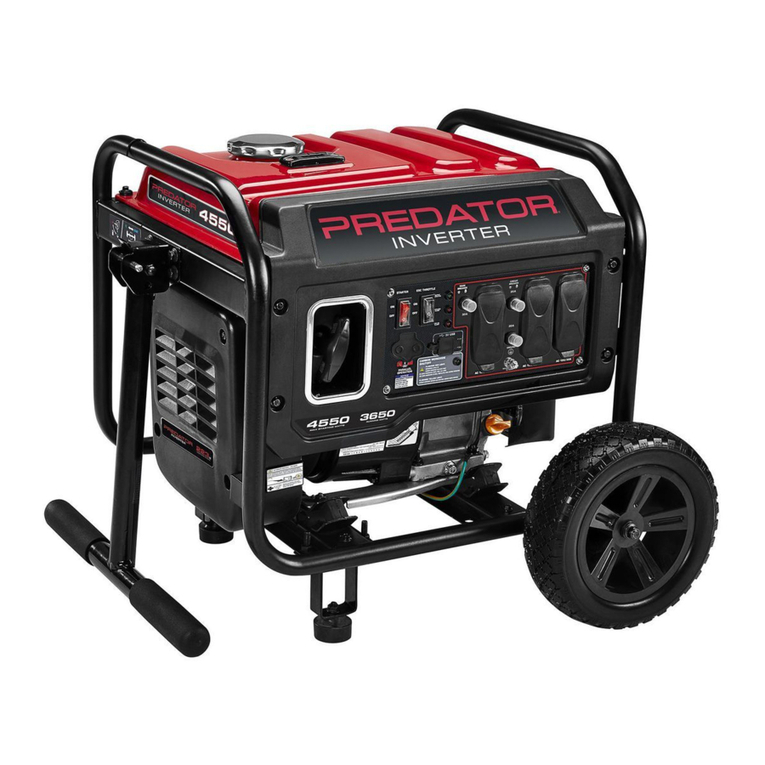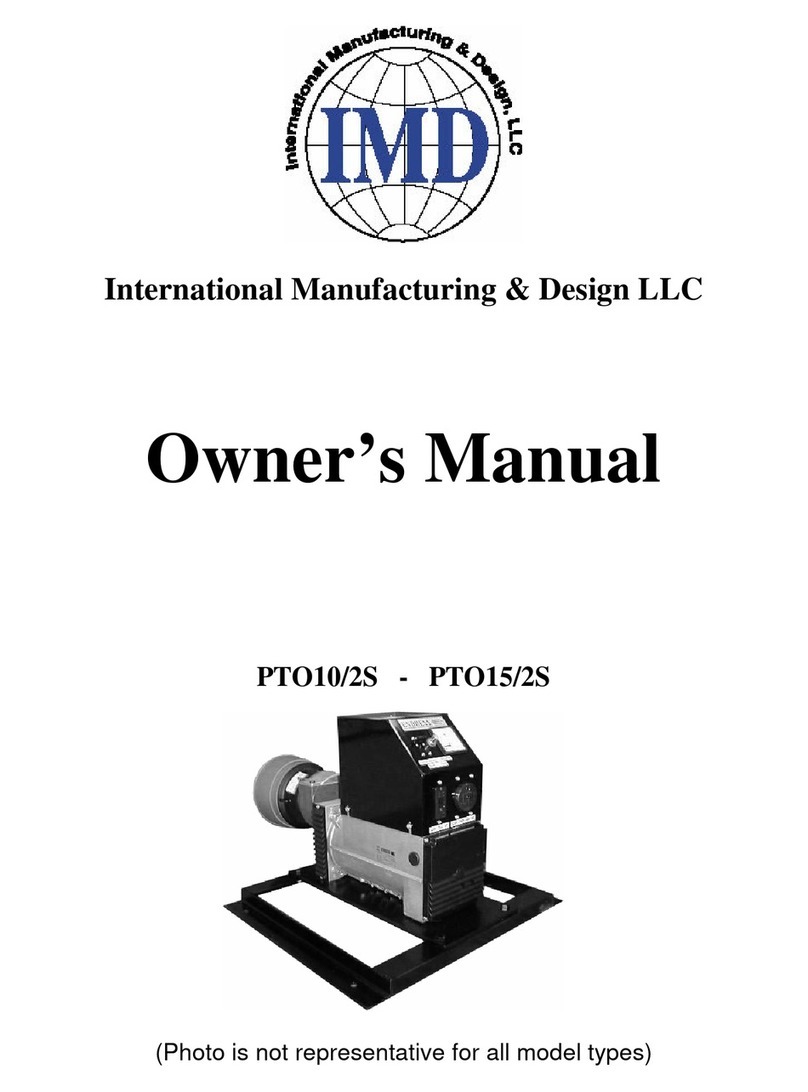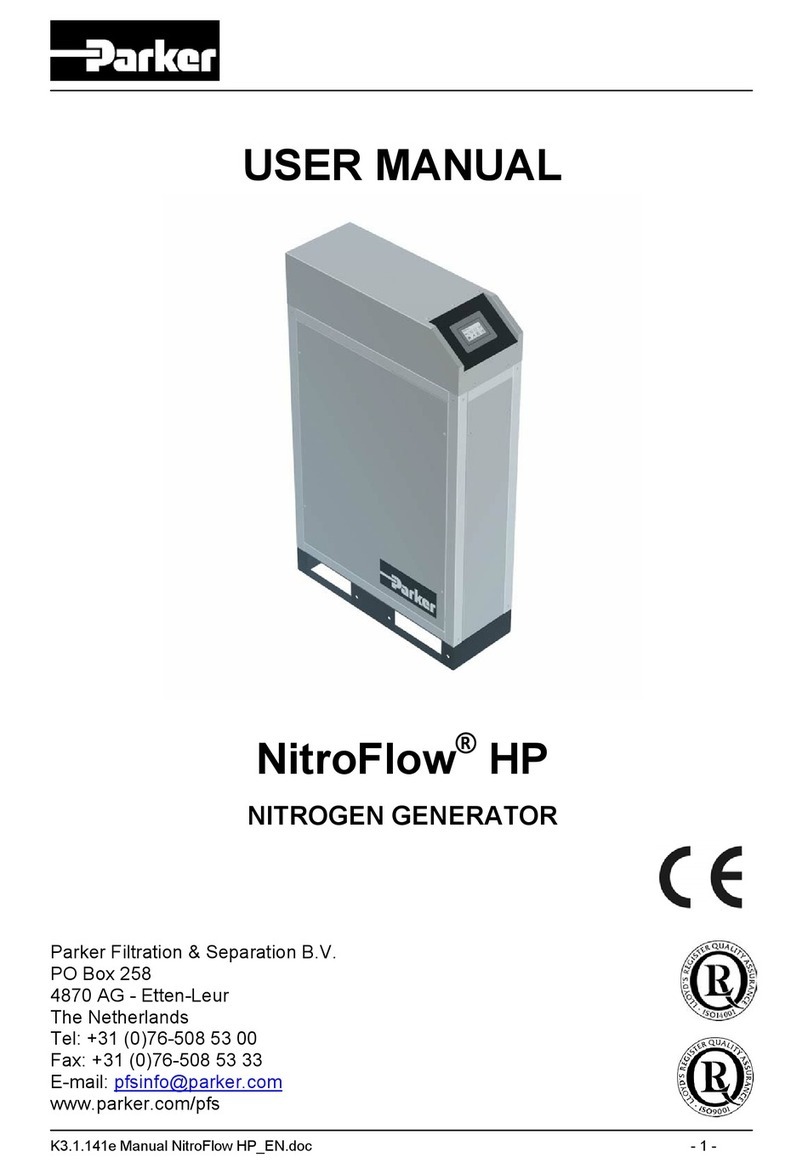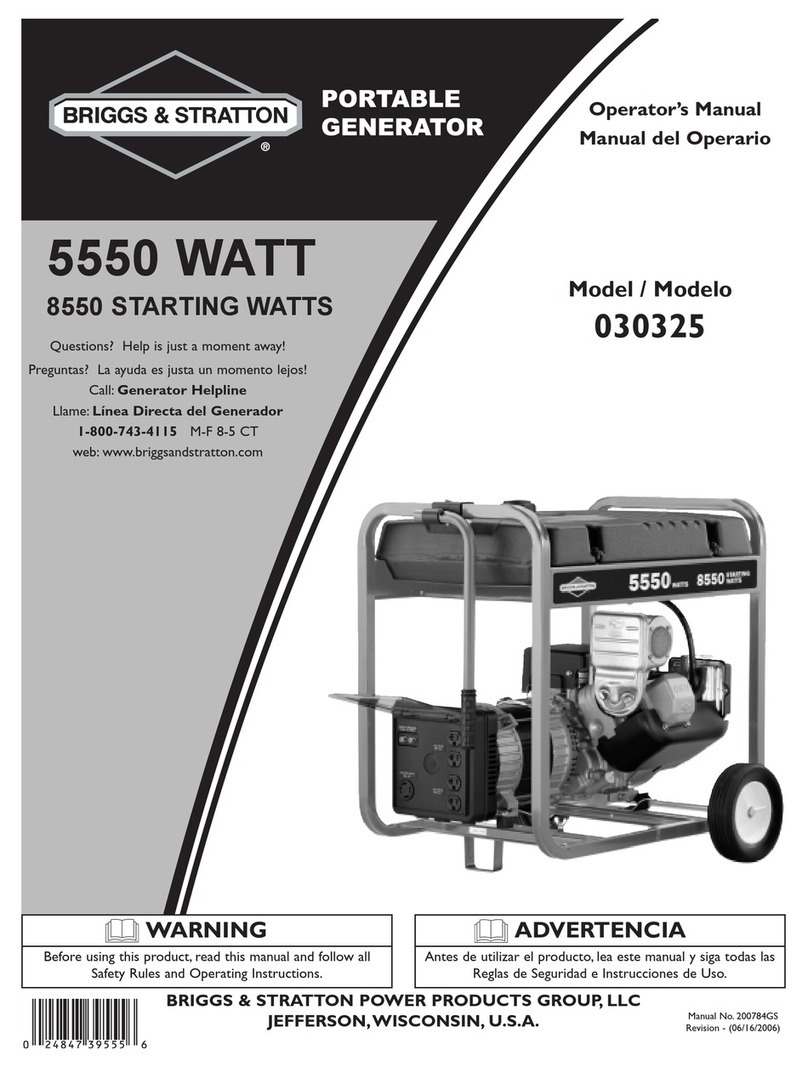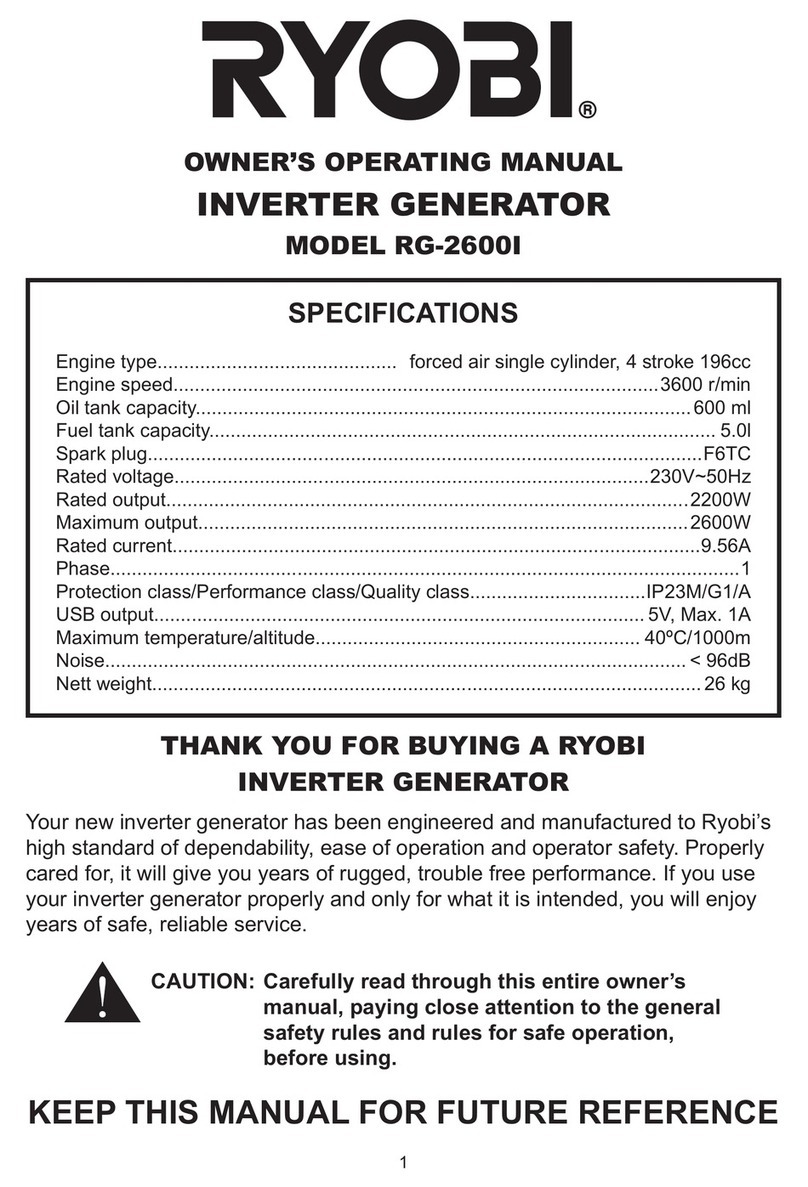PR electronics 2281 User manual

PERFORMANCE
MADE
SMARTER
Product manual
2281
Ramp generator
TEMPERATURE | I.S. INTERFACES | COMMUNICATION INTERFACES | MULTIFUNCTIONAL | ISOLATION | DISPLAY
No. 2281V103-UK
From serial no.: 211385001

6 Product Pillars
to meet your every need
With our innovative, patented technologies, we make signal conditioning smarter and simpler. Our portfolio is composed of six
product areas, where we offer a wide range of analog and digital devices covering over a thousand applications in industrial
and factory automation. All our products comply with or surpass the highest industry standards, ensuring reliability in even
the harshest of environments and have a 5-year warranty for greater peace of mind.
Individually outstanding, unrivalled in combination
Our range of temperature transmitters and sensors provides the highest level of signal integrity from the
measurement point to your control system. You can convert industrial process temperature signals to analog, bus or
digital communications using a highly reliable point-to-point solution with a fast response time, automatic self-
calibration, sensor error detection, low drift, and top EMC performance in any environment.
Our unique range of single devices covering multiple applications is easily deployable as your site standard. Having
one variant that applies to a broad range of applications can reduce your installation time and training, and greatly
simplify spare parts management at your facilities. Our devices are designed for long-term signal accuracy, low
power consumption, immunity to electrical noise and simple programming.
We provide inexpensive, easy-to-use, future-ready communication interfaces that can access your PR installed base
of products. All the interfaces are detachable, have a built-in display for readout of process values and diagnostics,
and can be configured via push-buttons. Product specific functionality includes communication via Modbus and
Bluetooth and remote access using our PR Process Supervisor (PPS) application, available for iOS and Android.
Our display range is characterized by its flexibility and stability. The devices meet nearly every demand for display
readout of process signals and have universal input and power supply capabilities. They provide a real-time
measurement of your process value no matter the industry and are engineered to provide a user-friendly and reliable
relay of information, even in demanding environments.
We deliver the safest signals by validating our products against the toughest safety standards. Through our
commitment to innovation, we have made pioneering achievements in developing I.S. interfaces with SIL 2 Full
Assessment that are both efficient and cost-effective. Our comprehensive range of analog and digital intrinsically
safe isolation barriers offers multifunctional inputs and outputs, making PR an easy-to-implement site standard.
Our backplanes further simplify large installations and provide seamless integration to standard DCS systems.
Our compact, fast, high-quality 6 mm isolators are based on microprocessor technology to provide exceptional
performance and EMC-immunity for dedicated applications at a very low total cost of ownership. They can be
stacked both vertically and horizontally with no air gap separation between units required.

2281V103-UK 1
Ramp generator
2281
Contents
Applications ............................................................................................ 2
Technical characteristics ................................................................................. 2
Inputs . . . . . . . . . . . . . . . . . . . . . . . . . . . . . . . . . . . . . . . . . . . . . . . . . . . . . . . . . . . . . . . . . . . . . . . . . . . . . . . . . . . . . . . . . . . . . . . . . . 2
Functions............................................................................................... 2
Ramp generator with internal time measurement....................................................... 2
Ramp generator with external pulses .................................................................. 2
Ramp generator for 2-phase encoder .................................................................. 3
Output ................................................................................................. 3
Order ................................................................................................... 4
Electrical specifications .................................................................................. 4
Block diagram ........................................................................................... 5
Hardware programmering ................................................................................ 6
Routing diagram ........................................................................................ 7
Configuration / operating the function keys ............................................................... 8
Description of functions (selection of application) ......................................................... 10
Document history ....................................................................................... 12

2 2281V103-UK
Ramp generator
2281
• Multiple functions
• Programmable from front
• 3-digit LED display
• NPN and PNP inputs
• Internal ramp time or external pulses
• Reset or preset function
Applications
To convert digital signals to a time-controlled analogue signal with either internally entered up/down time or with external
pulses for up/down function. Can convert digital outputs to analogue outputs. By connection of a 2-phase encoder as up/
down pulse generator the pulses will be converted to an analogue position signal. Especially suitable in applications where
easy 11-pole relay socket mounting is required for instance in a panel. Possibility of readout of the analogue value of the
output through the built-in display.
Technical characteristics
General
The 2281 is microprocessor-controlled and basic-calibrated. This means that the input and output can be programmed acc. to
the requested signal range without any readjustment. Thereby a high degree of accuracy and flexibility are ensured. The user
interface consists of a 3-digit display and 3 function keys in the front. The interface is used to change a function, ramp time or
an output signal range.
Inputs
6 digital inputs make it possible to choose reset, up/down functions as either NPN inputs (short circuit to gnd.) or as PNP input
(+ 24 VDC). The trigger level is typically 8 VDC with a pull up/down resistance of 3.5 kΩ corresponding to a load current of 6.9
mA. Via an analogue switch the up and down inputs can be switched between input filters for a pulse length > 10 ms or > 0.5
ms. The chosen filter is the same for all up/down inputs. The 10 ms filter is used for elimination of contact-bounce. The reset
inputs have a filter for pulse lengths > 30 ms. The arrow keys can be selected to work in parallel with the digital up and down
inputs.
Functions
Ramp generator with internal time measurement
Up ramp and down ramp can be set separately in the time span 0.1...999999 s. Reset can be chosen to preset at any value
between 0 and 100% output signal. The up/down time measurement starts when the time constant of the selected filter has
been exceeded.
If the up/down inputs are activated simultaneously, both ramps will be activated and the outputs rise/fall with the difference
of the times.
Ramp generator with external pulses
Up ramp and down ramp can be adjusted separately with a number of pulses between 1 and 15,615,744. The entered number
of pulses (max. 60999) are multiplied by the prescaler which can assume values between 1 and 256. Reset can be chosen to
preset at any value between 0% and 100% output signal. The pulse length must be longer than the time constant of the
selected filter. If the up/down inputs are activated simultaneously both input pulses will be scanned and the output will rise/
fall with the difference of the pulses. In case of supply drop-out the position will be remembered when the prescaler is 1.

2281V103-UK 3
Ramp generator for 2-phase encoder
The ramp pulses are set to a value between 1 and 15,615,744. The entered number of pulses (max. 60999) is multiplied by
the prescaler which can assume values between 1 and 256. The pulse length must be longer than the time constant of the
selected filter.
When the encoder is turned in one direction the output rises compared to the set number and pulses, when the encoder is
turned in the opposite direction the output falls proportionally.
The reset can be chosen to preset at any value between 0% and 100% output signal. By activating reset for instance in a 50%
position an auto-calibration of the measuring system is obtained. In case of supply drop-out the position will be remembered
when the prescaler is 1.
Output
Analogue standard current output of 0/4...20 mA or, with JP3 off, 0/2...10 mA. The output span can be set to any value within
the standard ranges with a max. offset of 50% of the max. value and a minimum span of 5 mA. Restart after a supply drop-
out can be chosen to generate either the reset value or the value which the output had just before the supply drop-out.
Maximum load is 600 Ω / 12 VDC. By short-circuit of pins 3 and 2 the output current is converted to a standard voltage of
0/0.2...1 VDC, 0/2...10 VDC or special VDC dependent on the size of R65. The voltage signal is available between pins 2 and 1.
See hardware programming for correct choice.
An overrange can be defined thereby enabling the output to exceed the selected signal range by ±3% within the limit of
0...20.5 mA.

4 2281V103-UK
Order
Electrical specifications
Environmental conditions
Operating temperature . . . . . . . . . . . . . . . . . . . . . . . . . . . . . . . . -20°C to +60°C
Calibration temperature. . . . . . . . . . . . . . . . . . . . . . . . . . . . . . . . 20...28°C
Humidity. . . . . . . . . . . . . . . . . . . . . . . . . . . . . . . . . . . . . . . . . < 95% RH (non-cond.)
Protection degree . . . . . . . . . . . . . . . . . . . . . . . . . . . . . . . . . . . IP50
Mechanical specifications
Dimensions (HxWxD) . . . . . . . . . . . . . . . . . . . . . . . . . . . . . . . . . 80.5 x 35.5 x 84.5 mm (D is without pins)
Weight approx. . . . . . . . . . . . . . . . . . . . . . . . . . . . . . . . . . . . . . 120 g
Common specifications
Supply voltage . . . . . . . . . . . . . . . . . . . . . . . . . . . . . . . . . . . . . 19.2...28.8 VDC
Internal consumption . . . . . . . . . . . . . . . . . . . . . . . . . . . . . . . . . 2.4 W
Max. consumption . . . . . . . . . . . . . . . . . . . . . . . . . . . . . . . . . . . 2.7 W
Programming . . . . . . . . . . . . . . . . . . . . . . . . . . . . . . . . . . . . . . Front-programmable
Response time . . . . . . . . . . . . . . . . . . . . . . . . . . . . . . . . . . . . . < 60 ms
Signal / noise ratio . . . . . . . . . . . . . . . . . . . . . . . . . . . . . . . . . . Min. 60 dB
Up ramp time . . . . . . . . . . . . . . . . . . . . . . . . . . . . . . . . . . . . . . 0.1...999999 s
Down ramp time . . . . . . . . . . . . . . . . . . . . . . . . . . . . . . . . . . . . 0.1...999999 s
External pulses. . . . . . . . . . . . . . . . . . . . . . . . . . . . . . . . . . . . . 1...15,615,744
Signal dynamics, output . . . . . . . . . . . . . . . . . . . . . . . . . . . . . . . 16 bit
Eect of supply voltage change . . . . . . . . . . . . . . . . . . . . . . . . . . < ±0.005% of span/%V
Temperature coecient. . . . . . . . . . . . . . . . . . . . . . . . . . . . . . . . < ±0.01% of span/°C
Linearity error . . . . . . . . . . . . . . . . . . . . . . . . . . . . . . . . . . . . . < ±0.1% of span
EMC immunity influence . . . . . . . . . . . . . . . . . . . . . . . . . . . . . . . < ±0.5%
Electrical specifications - INPUT
Digital input
Up / down inputs
NPN . . . . . . . . . . . . . . . . . . . . . . . . . . . . . . . . . . . . . . . . . . . Pull up 24 VDC / 6.9 mA
PNP. . . . . . . . . . . . . . . . . . . . . . . . . . . . . . . . . . . . . . . . . . . . Pull down 0 VDC / 6.9 mA
Pulse width, programmable . . . . . . . . . . . . . . . . . . . . . . . . . . . . . >10 ms / > 0.5 ms
Input frequency (max.) . . . . . . . . . . . . . . . . . . . . . . . . . . . . . . . . 50 Hz / 1 kHz
Reset inputs
NPN . . . . . . . . . . . . . . . . . . . . . . . . . . . . . . . . . . . . . . . . . . . Pull up 24 VDC / 6.9 mA
PNP. . . . . . . . . . . . . . . . . . . . . . . . . . . . . . . . . . . . . . . . . . . . Pull down 0 VDC / 6.9 mA
Pulse width . . . . . . . . . . . . . . . . . . . . . . . . . . . . . . . . . . . . . . . > 30 ms
Input frequency (max.) . . . . . . . . . . . . . . . . . . . . . . . . . . . . . . . . 16 Hz
Electrical specifications - output
Current output:
Signal range. . . . . . . . . . . . . . . . . . . . . . . . . . . . . . . . . . . . . . . 0...20 mA
Min. signal range (span). . . . . . . . . . . . . . . . . . . . . . . . . . . . . . . . 5 mA
Max. oset . . . . . . . . . . . . . . . . . . . . . . . . . . . . . . . . . . . . . . . 50% of selected max. value
Load (max.) . . . . . . . . . . . . . . . . . . . . . . . . . . . . . . . . . . . . . . . 20 mA / 600 Ω / 12 VDC
Load stability . . . . . . . . . . . . . . . . . . . . . . . . . . . . . . . . . . . . . . < ±0.01% of span/100 Ω
Current limit. . . . . . . . . . . . . . . . . . . . . . . . . . . . . . . . . . . . . . . 20.5 mA
Of span = Of the presently selected range
Type
2281

2281V103-UK 5
Voltage input via an internal shunt
Signal range. . . . . . . . . . . . . . . . . . . . . . . . . . . . . . . . . . . . . . . 0...10 VDC
Min. signal range (span). . . . . . . . . . . . . . . . . . . . . . . . . . . . . . . . 250 mV
Max. oset . . . . . . . . . . . . . . . . . . . . . . . . . . . . . . . . . . . . . . . 50% of selected max. value
Load (min.) . . . . . . . . . . . . . . . . . . . . . . . . . . . . . . . . . . . . . . . 500 kΩ
Voltage limit . . . . . . . . . . . . . . . . . . . . . . . . . . . . . . . . . . . . . . 10.25 VDC
Observed authority requirements
EMC. . . . . . . . . . . . . . . . . . . . . . . . . . . . . . . . . . . . . . . . . . . . 2014/30/EU & UK SI 2016/1091
RoHS . . . . . . . . . . . . . . . . . . . . . . . . . . . . . . . . . . . . . . . . . . . 2011/65/EU & UK SI 2012/3032
EAC . . . . . . . . . . . . . . . . . . . . . . . . . . . . . . . . . . . . . . . . . . . . TR-CU 020/2011
Block diagram
9
10
24 V
NPN
PNP
CPU
E E P R OM
1
V
3I +
A
D/A
0...20
mA
8
7
5
10
11
6
4
V -
V + DC
DC
e
V
A
2281
JP 3 O
0...10 mA
500
50
2V +
JP 2JP 1
V +
V +
V +
Supply+24VDC
Supplygnd.
Reset
Reset
Down
Down
Up
Up
Gnd.
Gnd.
Gnd.
I + V
Out
I
Out
V
Out
Spec.
V Out
R 65
3.5 k
3.5 k
3.5 k
3.5 k
3.5 k
3.5 k

6 2281V103-UK
Hardware programmering
JP1 JP2 JP3 Output Menu 4.3
OFF OFF OFF
ON
0...10 mA
0...20 mA
1
2
ON OFF OFF
ON
0...500 mV
0...1000 mV
3
4
OFF ON OFF
ON
0...5 V
0...10 V
5
6

2281V103-UK 7
0.0
5.0 5.1 5.2 5.3
3.0 3.1 3.2
1.0 1.3
2.0 2.1 2.2
1.1 1.2
4.0 4.1 4.2 4.3
5. 4
4. 4
001 = 0...10 mA
002 = 0...20 mA
003 = 0...500 mV
004 = 0...1000 mV
005 = 0...5 V
006 = 0...10 V
5. 15. 0
Programming
Pressand hold ,thenpress
tostorechanges.
Changeof parameter
Next digitor point
Goto entrymenu / Leave
menuwithout changes
LO = 50 Hz
HI = 1 kHz
If no buttonsarepressedforaperiod of 2 minutes,
displayreturns to stage 0.0
Front Setting
5.2EFS/dFS - enable/ disable front setting
Decreaseofoutput
Exitfrontsetting
001= Internaltimecount
002= Externalpulses
003= 2-phase encoder 040 = enablechangein all stages
- - -= disable change
Routingdiagram
Ramp generator
function
Application
Program
access
Overrange
0... 999
Down low
value
Uplow
value
Uphigh
value
Downhigh
value
Passwordcode
Parameters
Outputvalue at
Power up
0...999s
0...999pulses
0...999s
0...999pulses
0...999* 1000 s
0...060* 1000 pulses
0...999* 1000 s
0...060* 1000 pulses
Up
Ramp
Down
Ramp
HLd=Memoryvalue
rES =Reset value 0...100%
Reset Prescale
Pulsemultiplier
001...256
Increaseof output
Analog
output
Output0% Output typeOutput100%
0...20.0mA
0...10.0VDC
0...20.0mA
0...10.0VDC
Enable/disable
frontsetting
EFS= Enable front setting
dFS= Disable front setting
Filter
ON
OFF
Memory
Routing diagram

8 2281V103-UK
Configuration / operating the function keys
Documentation for routing diagram
General
The programming is menu-controlled. The main menus are numbered in level 0 (x.0), and the submenus are numbered in
level 1 (x.1 to x.5). Each submenu has an accompanying entry menu. The menus are structured in such a way that the
menus most frequently used are closer to the default menu 0.0. Please note that programming is only possible when
submenu 5.4 PAS has the value 040.
Menus and submenus are selected by the 3 function keys
2
,
3
, and
1
as
outlined in the routing diagram.
Activating
2
will display the current value. In entry menus, the digit that can
be changed will flash.
Active digit position is shifted by the
3
key, and the value is changed by the
1
key. When the decimal point flashes, its position can be changed by the
3
key.
In parameter selection menus you switch between the parameters by the
1
key.
Store by first activating
1
and then
3
simultaneously.
To return to the previous menu without changing the parameters - activate
2
.
If a non-valid value is entered, the display will show Err for 2 s and then
return to the entry menu with the initial parameters.
0.0 Default - The output value is displayed in %
The display returns to default at power ON, or if no keys have been activated for a period of 2 minutes.
3
Front Setting - Manual operation of up ramps or down ramps.
When menu 5.2 has been selected as EFS (Enable Front Setting), you can ramp up or down by way of the Front Setting
function. In this menu the function keys have a special function, as
1
corresponds to the activation of the “UP” input,
and
3
corresponds to the activation of the “DOWN” input. The output value is displayed in %.
Activate
2
to leave the Front Setting menu and to store the present ramp value.
0.0
5.2 EFS/dFS - enable / disable front setting
Front Setting
Decrease output
Exit front setting
Increase output
1.0 1.1
Memory
Programming
Change of parameter
Next digit or point
Go to entry menu / Leave
menu without changes
To store changes press
simultaneously.

2281V103-UK 9
1.0 PAr - Parameter menu - selection of Power up / reset value and prescaler
1.1 PUP - Setting of output value at Power up
Selection of the function which the output will follow at Power up.
At HLd the output is set to the value it had immediately before power down. At rES the output is set to the present
value of menu 1.2.
Possible selections are HLd - the memory value, and rES - the reset value.
1.2 rES - Setting of reset / preset value
The reset value is set in % of the output span.
Valid selections are 0...99.9%.
1.3 PrE - Setting of prescaler for external pulses
The prescaler is multiplied on the set up and down pulses. When the external pulse number is ≤ 60999, the prescaler
is set to 1.
Valid selections are 1...256.
2.0 UP - Setting of up ramps
When menu 5.1 = { 1 = Internal time measurement }, the up ramp is set in seconds and menu 1.3 (prescaler) has no
function.
When menu 5.1 = { 2 = External pulses or 3 = 2-phase encoder }, the up ramp is set in number of pulses ≤ 60999. The
pre-scaler set in menu 1.3 is multiplied on the entered up pulses.
2.1 UHI - Setting of up ramps in thousands
Valid selections are 0...999 (* 1000 s) or 0...60 (* 1000 pulses).
2.2 ULO - Setting of up ramps in ones
Valid selections are 0...999 s or pulses.
3.0 dO - Setting of down ramps
When menu 5.1 = { 1 = Internal time measurement }, the down ramp is set in seconds and menu 1.3 (prescaler) has no
function.
When menu 5.1 = { 2 = External pulses or 3 = 2-phase encoder }, the down ramp is set in number of pulses ≤ 60999. The
prescaler set in menu 1.3 is multiplied on the entered down pulses.
3.1 dHI - Setting of down ramps in thousands
Valid selections are 0...999 (* 1000 s), or 0...60 (* 1000 pulses).
3.2 dLO - Setting of down ramps in ones
Valid selections are 0...999 s or pulses.
4.0 OUt - Setting of signal output
4.1 OL - Entry of 0% output signal
Possible selections are current 0.0...20.0 mA, or voltage 0.0...10.0 VDC.
4.2 OH - Entry of 100% output signal.
Possible selections are current 0.0...20.0 mA, or voltage 0.0...10.0 VDC.
4.3 UI - Selection of current or voltage output
The basic calibration data within the module varies according to the selected output signal range, which means that
the current output is current-calibrated, and the voltage output is voltage-calibrated by way of the installed internal
resistors.
See the hardware programming for correct jumper setting.
Possible selections are:
001 = current output in the range 0...10 mA
002 = current output in the range 0...20 mA
003 = voltage output in the range 0...500 mV
004 = voltage output in the range 0...1000 mV
005 = voltage output in the range 0...5 V
006 = voltage output in the range 0...10 V

10 2281V103-UK
Description of functions (selection of application)
4.4 OR Selection of Overrange
If ON has been selected, the output can exceed the selected output span by ±3%. However, only within 0 to 20.5
mA. If OFF has been selected, the output is limited by the selected output span.
Possible selections are ON or OFF.
5.0 APP - Selection of application
5.1 FUn - Selection of function
Common to all functions is the selection of filter (FLt) in menu 5.2. Depending on the selection, the up/down pulse
length must be > 10 ms (50 Hz), or > 0.5 ms (1 kHz).
The reset input has a fixed filter of 30 ms (16 Hz).
At power up the output value can be set to adopt the value it had immediately before power down, or set to adopt
the same value as at reset. The reset value can be set to a value between 0 and 99.9% of the output span.
Possible selections of function are:
001 = Ramp generator with internal time measurement
The up and down ramps can be set separately in the time range 0.1...999999 s. The up/down time measurement
starts when the inputs have been activated longer than the time constant of the connected filter.
If the up/down inputs are activated simultaneously, both ramp times will be measured and the output will decrease/
increase by the difference between the times.
002 = Ramp generator with external pulses
The up and down ramps can be set separately by pulse numbers between 1 and 15,615,744 which are set in menu
2.0 UP/3.0 dO and menu 1.3 PrE respectively.
The values set in menu 2.0 and 3.0 (1...60999) are multiplied by the value set in menu 1.3 (1...256). An up ramp of
75258 pulses is set in menu 2.1 to 37; in menu 2.2 to 629; and in menu 1.3 to 2 (37629 x 2 = 75258). With a pre-
scaler of 2, the number of pulses on the down ramp must also be set as (number of pulses / 2). The up/down pulses
are detected when the inputs are activated longer than the time constant of the connected filter. If the up/down
inputs are activated simultaneously, both input pulses will be read, and the output will increase/decrease by the
difference between the pulses.
003 = Ramp generator for 2-phase encoder
The resolution of the applied 2-phase encoder is doubled, as both the leading and trailing edges on the pulses are
counted. A 2-phase encoder with 100 pulses per revolution which is to be revolved 10 times, must be set to 2000
pulses (100 x 10 x 2). The ramp pulses can be set with a pulse number between 1 and 15,615,744, which is set in
menu 2.0 UP and 1.3 PrE respectively.
Menu 3.0 has no function at a 2-phase encoder. The value set in menu 2.0 (1...60999) is multiplied by the value set
in menu 1.3 (1...256). If the encoder yields 30000 pulses for instance, the ramp pulses must be set to 60000 by
setting menu 2.1 to 60, menu 2.2 to 000, and menu 1.3 to 1 (60000 x 1 = 60000). The ramp pulses are detected
when the inputs are activated longer than the time constant of the connected filter. When the encoder is turned in
one direction, the output increases according to the set number of pulses. When the encoder is turned in the
opposite direction, the output decreases accordingly.
The output signal represents the encoder position and can be autocalibrated by activating the reset input. If the
reset input is activated at for instance the 50% position of the encoder, the reset value must be set at 50%. Please
note that as long as the reset inputs are active (> 30 ms), the output will adopt the set reset value.

2281V103-UK 11
5.2 EFS - Enable/disable Front Setting
Access to change of ramp value is determined by the parameters EFS (Enable Front Setting) - change of ramp value
is possible; or dFS (disable Front Setting) - locking of change of ramp value.
Possible selections are EFS or dFS.
5.3 FLt - Setting of up/down filter
The filter can be set to a pulse length of > 10 ms (50Hz), or > 0.5 ms (1kHz).
Possible selections are LO - 50Hz, or HI 1 kHz.
5.4 PAS - Password
When the password is 040, changes can be made in all menu points. When the password is <> 040, programming in
all menu points is locked but open for reading of settings.
Possible selections are 0...999.

12 2281V103-UK
Document history
The following list provides notes concerning revisions of this document.
Rev. ID Date Notes
103 2232 UKCA added.

We are near you,
all over the world
All our devices are backed by expert service and a 5-year
warranty. With each product you purchase, you receive
personal technical support and guidance, day-to-day delivery,
repair without charge within the warranty period and easily
accessible documentation.
We are headquartered in Denmark, and have offices and
authorized partners the world over. We are a local business
with a global reach. This means that we are always nearby
and know your local markets well.
We are committed to your satisfaction and provide
PERFORMANCE MADE SMARTER all around the world.
For more information on our warranty program, or to meet
with a sales representative in your region, visit
prelectronics.com.
Our trusted red boxes are supported wherever you are

PR electronics is the leading technology company specialized in making industrial process
control safer, more reliable and more efficient. Since 1974, we have been dedicated to
perfecting our core competence of innovating high precision technology with low power
consumption. This dedication continues to set new standards for products communicating,
monitoring and connecting our customers’ process measurement points to their process
control systems.
Our innovative, patented technologies are derived from our extensive R&D facilities and
from having a great understanding of our customers’ needs and processes. We are guided
by principles of simplicity, focus, courage and excellence, enabling some of the world’s
greatest companies to achieve PERFORMANCE MADE SMARTER.
Benefit today from
PERFORMANCE MADE SMARTER
www.prelectronics.com
Table of contents
Popular Portable Generator manuals by other brands

Harbor Freight Tools
Harbor Freight Tools Predator 62523 user manual
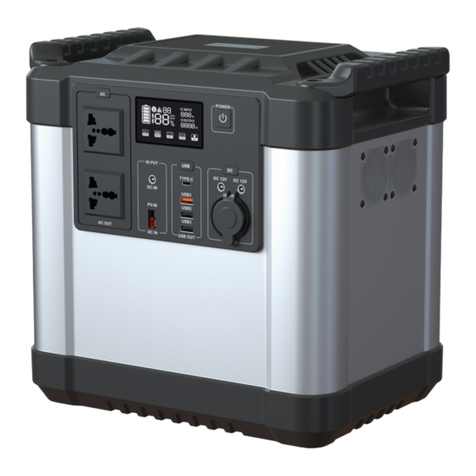
LIPOWER
LIPOWER G1600L user manual

Briggs & Stratton
Briggs & Stratton 030360-0 Wiring diagram

Champion Power Equipment
Champion Power Equipment Power Sports 73538i Owner's manual & operating instructions

Briggs & Stratton
Briggs & Stratton 30385 Illustrated parts list
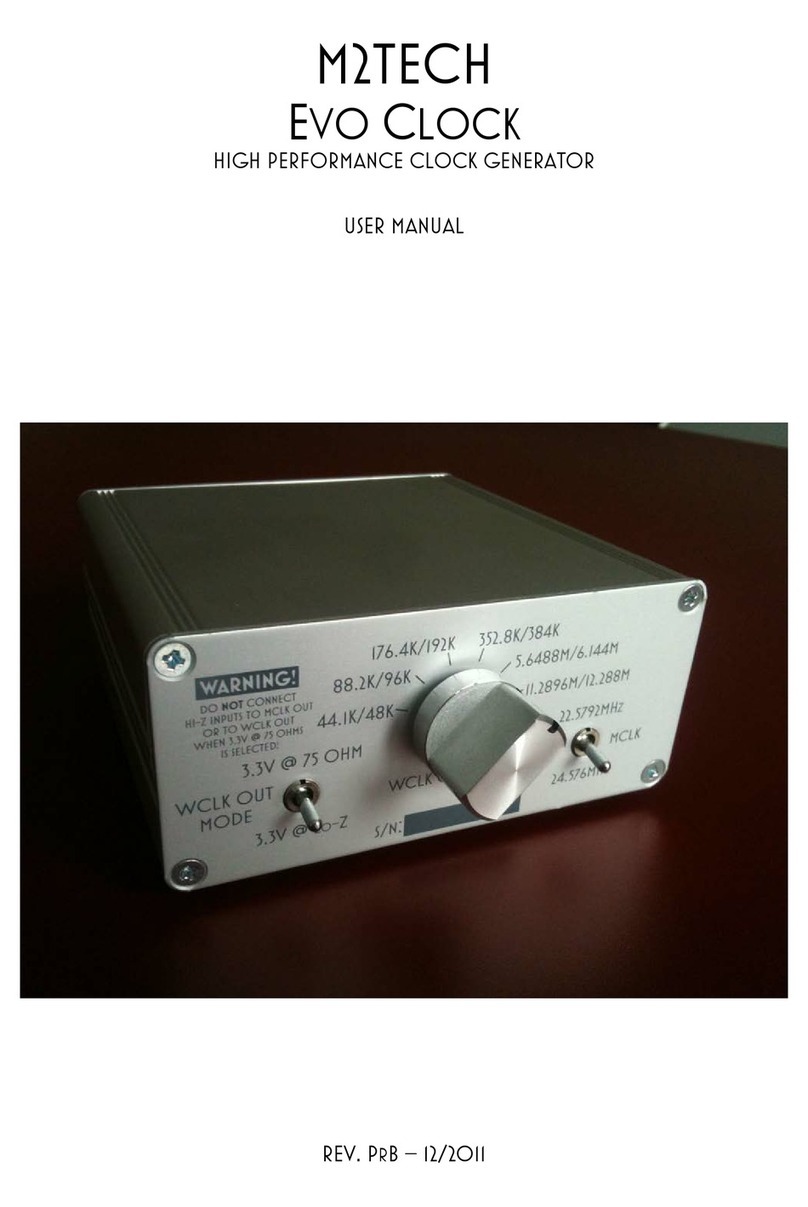
M2TECH
M2TECH Evo Clock user manual
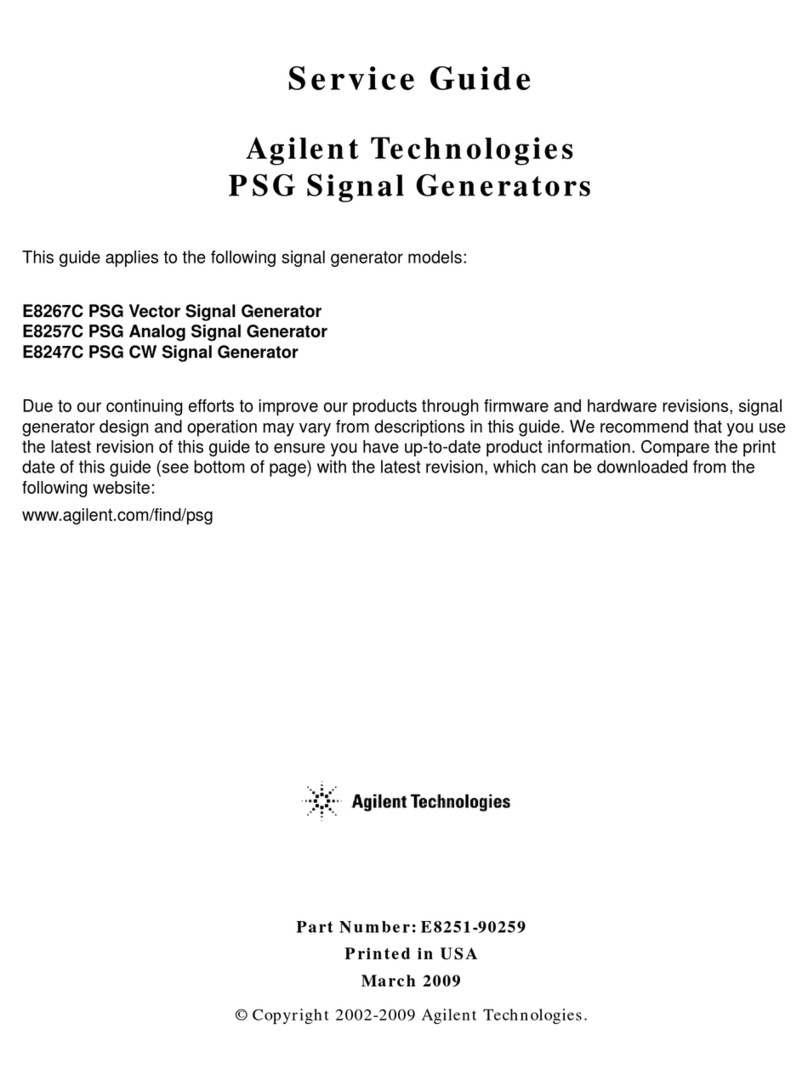
Agilent Technologies
Agilent Technologies E8267C Service guide
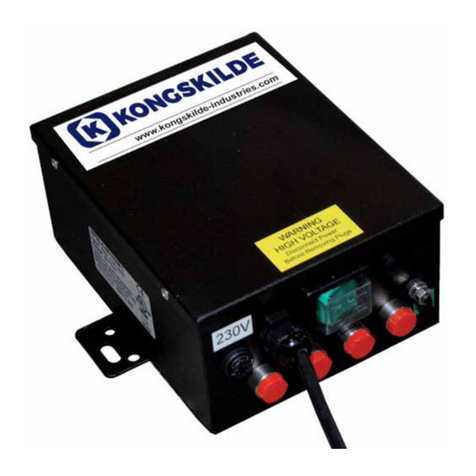
Kongskilde
Kongskilde HP50-2 manual

Mosa
Mosa GE 3900 Use and maintenance manual
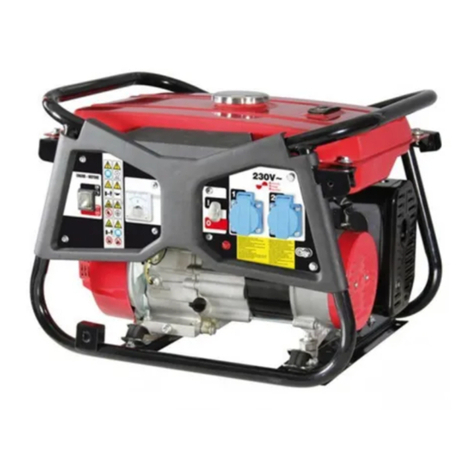
Valex
Valex EX 3300 operating instructions

Champion Global Power Equipment
Champion Global Power Equipment 201001 Operator's manual
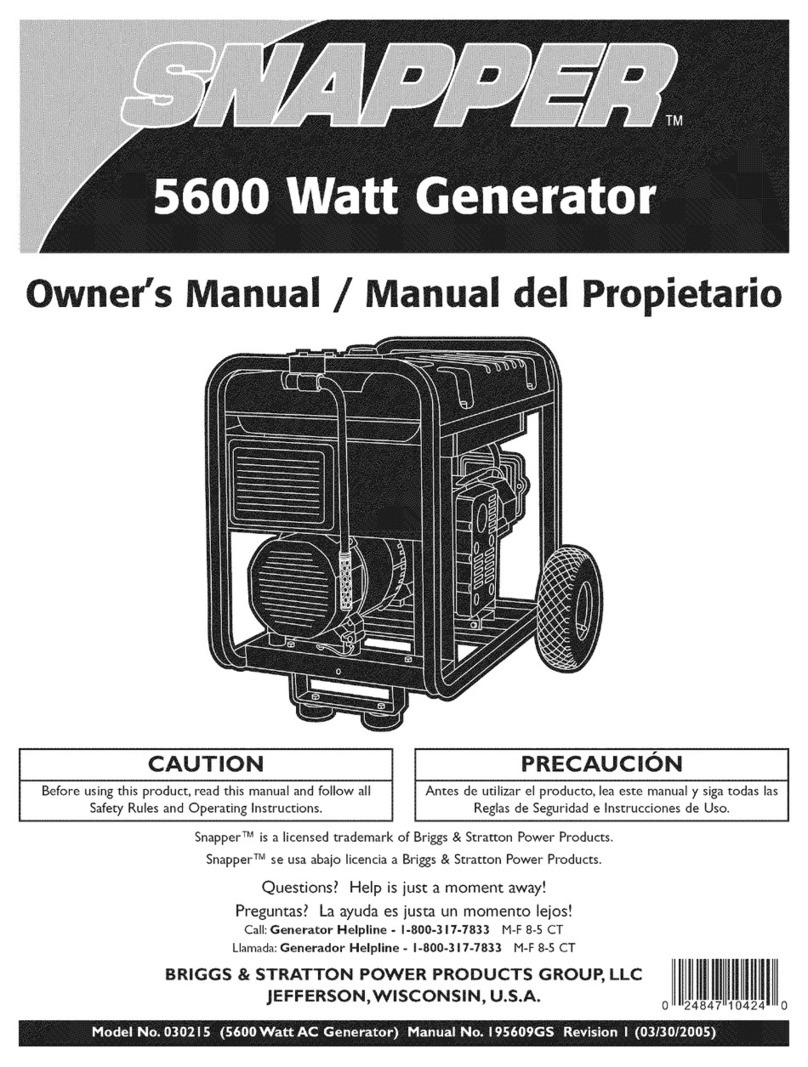
Snapper
Snapper 30215 owner's manual
